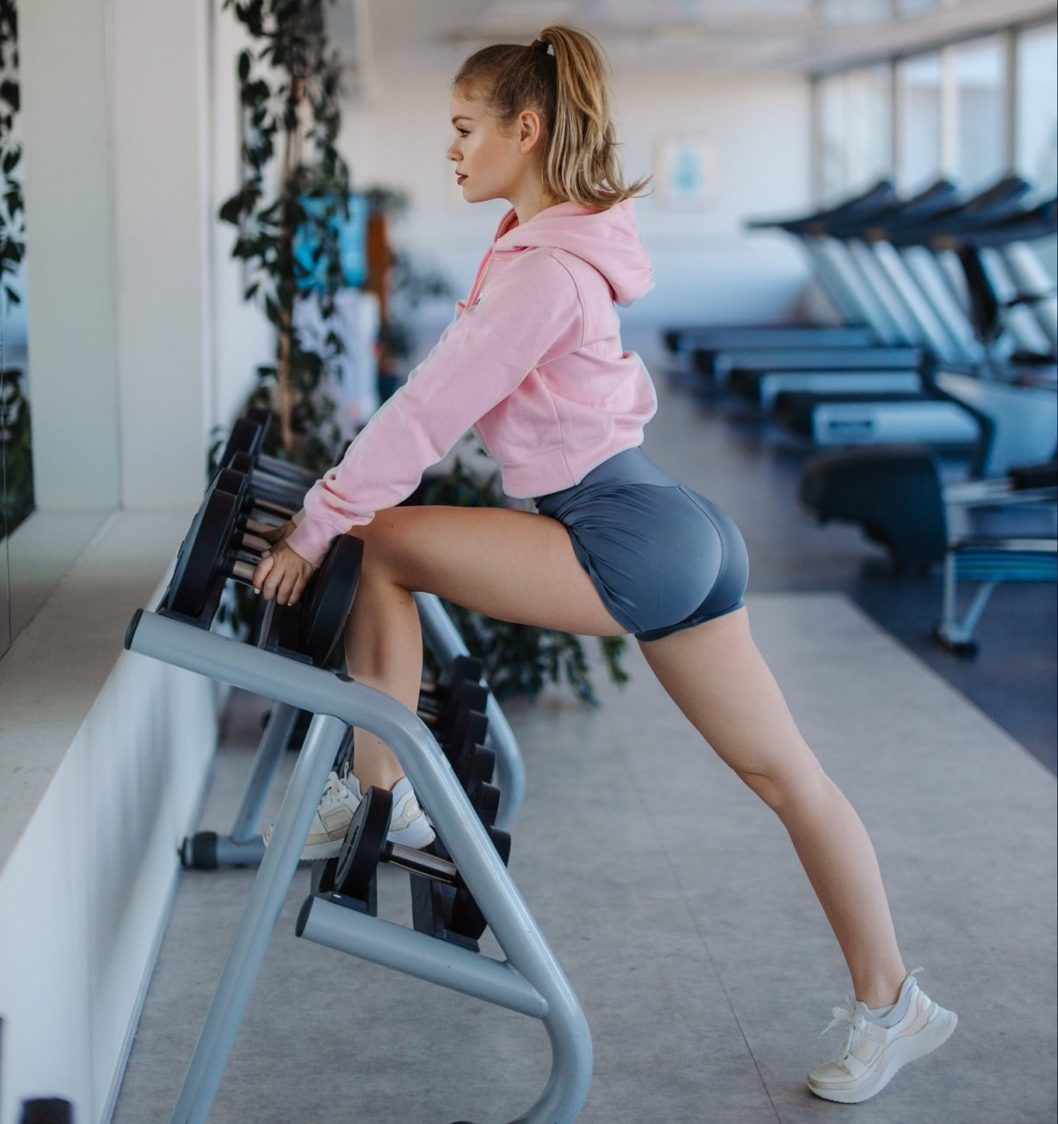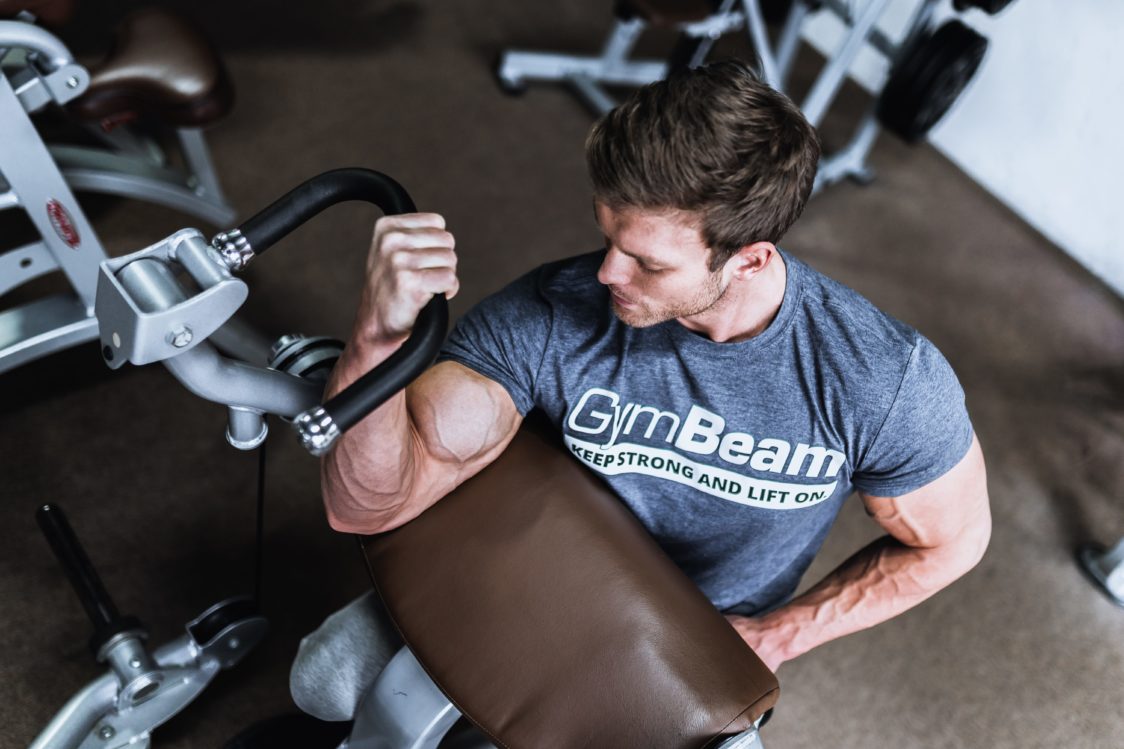Would you like to pump your butt in such a way that all eyes around you rest on it? Your training plan shouldn’t miss a unique exercise – Hip Thrust! With regular intervention you strengthen the sciatic muscles, improve your posture, but above all you achieve the desired shape!
What is Hip Thrust?
The literal translation of this exercise means “Hip Thrust” . Exactly this is what the hip thrust design looks like . The basic movement of the exercise is lifting the pelvis and then compressing the sciatic muscles. There are several variations in performing this exercise. You can also make it more difficult by adding weights to put on the lumbar spine. It’s usually a barbell, plate, or various other charging accessories .
But why should you include Hip Thrust in your training plan? This is one of the best and definitely most popular exercises for the ass. So if you want a round and firm ass, you shouldn’t miss out on hip thrust. In addition, this exercise increases power and strength in other complex exercises such as squats or deadlifts and also improves the mobility of the entire body .

Which muscles do you use in hip thrust?
Hip thrust is most often included in the training plan , mainly for butt training. Its main benefit is strengthening the sciatic muscles. While the squats and deadlifts are considered the best exercises for the buttocks, the core, back and thigh muscles are also involved in their performance . With Hip Thrust, however, you’re guaranteed to be the one your bum is most involved in. Exercising other muscle parts is a secondary benefit. However, performing hip thrusts also activates hamstrings, quadriceps and adductors .
What is the difference between Hip Thrust and Glute Bridge?
Many people think that Hip Thrust is actually just another version of the classic Glute Bridge . To a certain extent, they are right . Both exercises are performed by lifting the pelvis to the ceiling and then compressing the sciatic muscles . However, the difference between the two exercises is much more complex. So let’s take a look at how Hip Thrust differs from Glute Bridge .
Glute Bridge – is only performed on the ground , while Hip Thrust is performed on an elevated one Armrest is running. In the sequel, however, the exercise is very similar. To properly perform Glute Bridge, you should follow this simple procedure:
- Lie on your back on the floor
- bend your legs at the knees so that they form a right angle when the pelvis is then raised
- keep your palms on the floor along your body
- slowly lift the pelvis and core while pressing the sciatic muscles during the lift – thighs and hips should be in line with the back
- stay in this position for at least 3 seconds
- Lower your hips and bum back to the floor and repeat the exercise
- exhale as you lift your pelvis and inhale as you place your pelvis on the floor
Glute Bridge is mostly done only with your own weight , but you can add lighter weights to make the exercise more difficult. You should, however, take care of your back. The higher the load you choose, the more the core of your body and your spine is stressed. Glute Bridge can have higher overload of the spine than hip thrust.
hip thrust – for this exercise you you need a bench or other support point. The The point is to place your shoulder blades on a flat surface on which you support yourself and lift your pelvis, so that you achieve a straight angle between your hips and shoulders . You can use weights in the form of barebells, single arms, discs or kettlebels to make the exercise more difficult.
Watch the following video to better understand the difference between Glute Bridge and Hip Thrust:
The Right Technique for Performing Hip Thrust
Performing Hip Thrust is not difficult and you need to no special accessories that you wouldn’t find in the gym or that you couldn’t buy in the sports shop. However, it requires the right execution technique, without which you would not get the results you want. The right hip thrust technique also protects you from injuries and prevents unpleasant back and thigh pain.
What should you do before you start hip thrust?
Before starting the exercise yourself, make sure that you find the right and suitable place . You need a bench or chair to lean back on while exercising. The height of your backrest should be approx. 40 cm depending on its size and proportions. A bench press that is firmly attached to the floor is ideal.
If you want to train with weights, you should choose the right load, that too should be adapted to your proportions and your physical condition . The load should be such that you can lift it with your hips without causing pain or injury. Better to start with less weight and more reps. However, putting weights on your hips can be painful and uncomfortable. So use a mat or towel.
Procedure for the correct execution of Hip Thrust
- Sit with your back to the bench and lean against the bottom of your shoulder blades.
- Place the load on your hips and hold it with your hands. It is best to use the arm-width handle.
- Place your feet on the floor.
- The distance between your feet should be slightly larger than the width of your pelvis and hips.
- When lifting the pelvis, the legs should be at right angles below the knees.
- Never tilt your head forward or back.
- Your head and neck should move into the correct position on their own.
- When you’re ready, put your heels on the floor and use your sciatic muscles to lift the weight towards the ceiling so that you achieve a straight angle between your head, neck, torso, buttocks and legs.
- Do not use your back muscles when lifting, otherwise there is a risk of injury .
- In the upper phase of the exercise, we press the sciatic muscles, push the hips forward and exhale – stay in this position for at least 3 seconds.
- Return with one breath Return to the starting position and repeat the exercise.

You can also see the correct technique of performing hip thrust in the video:
The most common mistakes when performing hip thrust
- Inclination of the head and neck
- Exaggerated flexion of the lower Raise the back
- on tiptoe
- Lift the weight through the stomach or back, not through the buttocks, and the pelvic extension in the tip phase of the repetition
Benefits of Hip Thrust
Helps to strengthen and build sciatic muscles
More and more fitness enthusiasts long for a high-quality and sophisticated background , not only from an aesthetic but also from a functional point of view. Strong sciatic muscles help with other important exercises . A serious study even found that hip thrusts activate more muscle fibers in the sciatic muscles than the squats themselves .

Increases squat and deadlift strength
It’s been proven that building sciatic muscles with squats or deadlifts can be more of a challenge for you than for someone who has been exercising for a while. This is because the weaker butt is not putting enough pressure on the hips so activating the lumbar muscles, which coordinate further movements, is more difficult and time-consuming. Therefore, underdeveloped buttocks can reduce the depth of the squat and cause subsequent pain, muscle damage, and severe muscle fever .

Improves posture
The main function of the sciatic muscles is to move and tighten the hip joint strengthen, which is also responsible for holding our bodies. If you don’t exercise your bum regularly, the muscles on it will be weakened and shortened. For example, if you sit for a long time, you have problems getting up and keeping your body upright, for example.
Improves performance and maximizes strength during training
Not only strong legs or back, but also a firm bum lead to maximizing your performance in the gym. Strong sciatic muscles help you overcome obstacles during of training. By including them, you can improve stability in certain exercises or even longer during a run or other cardio exercise. The sciatic muscles activate the hip joint, which then coordinates the movements of the legs .

Variations of Hip Thrusts
There are really many possibilities to perform hip thrust. Check out some basic variations that you can use to pump your butt!
Classic Hip Thrust
This is the most basic type of hip thrust that we basically described above. You can use any weight with it. Hence, this classic type of exercise is further broken down based on the type of weight you choose. It’s a hip thrust with one-armed dumbbell, with a barbell or with rollers.
American Hip Thrust
This is a classic version of Hip Thrust, with a slight improvement. In the classic design of this exercise, while leaning on the bench with the lower part of your shoulder blades, in the American version lean on the bench with a seat on your back that only allows you to located under the shoulder blades . With such an “American” position you lighten your back and strain the sciatic muscles more.
Please note that it is best at the beginning to only the classic hip Run Thrust with less load. Over time, you can add heavier weights and liven up your workout with certain variations of Hip Thrust.
Specific variations of Hip Thrust
Elevated Leg Hip Thrust – This is a type of hip thrust in which you lean your back against a bench and your legs are elevated, not the floor Mat lie
Hip Thrust with one leg – classic Hip Thrust, in which you lift one leg with your buttocks and hips
Hip Thrust with an expander – a variation of the classic hip thrust, in which a resistance rubber is used as a load instead of a barbell
Tabata Hip Thrust – This is a classic hip thrust that you perform in the Tabata time interval (20 to 30 seconds)
Hands free Hip Thrust – classic hip thrust with weights that you don’t hold with your hands, but You also need to maintain balance and the exercise is more difficult
For more inspiration on different types of hip thrust, see the video:
Hip Thrust is just a unique exercise that should definitely not be missing in your training plan. We reiterate that you should start with lower loads and gradually add higher weights. However, it is important to fully understand the technique of performing this exercise, which can take a long time. If you are unsure, seek help from a trainer at your gym.
Do you include Hip Thrust in your training plan? Let us know in the comments what type of hip thrust you prefer. If you liked this article, support it by sharing it with your friends.
